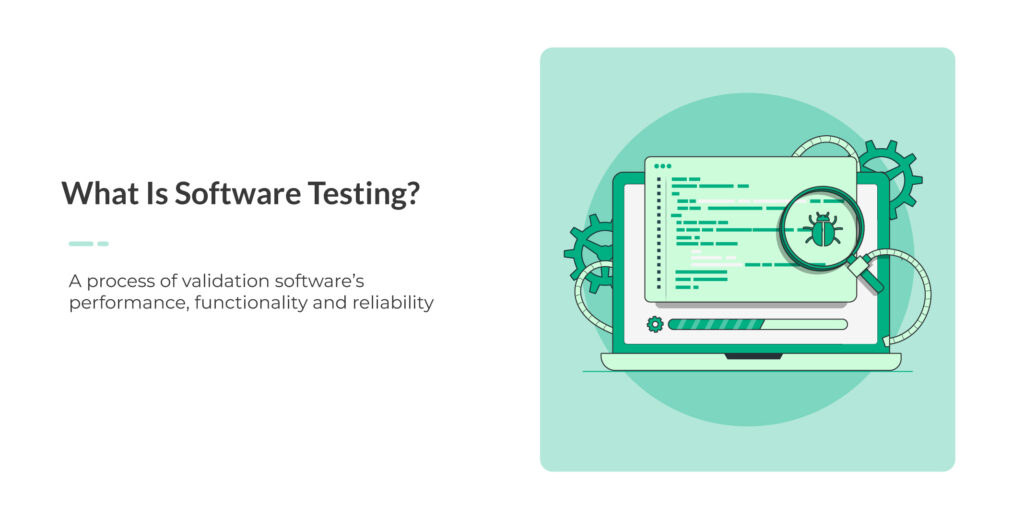Ensuring a high-quality product is quite essential in software development. Two terms that frequently come up in this context are Quality Assurance (QA) and Testing. While they are closely related, they serve distinct purposes. Understanding the differences between Quality Assurance Vs Testing can help organizations establish efficient processes and deliver superior software solutions. Read along till the end to find out the differences between them.
What is Quality Assurance (QA)?

When we talk about Quality Assurance (QA), we’re not just talking about finding and fixing bugs, we’re talking about building quality into the entire software development process.
Think of QA as a preventive approach rather than a corrective one. Instead of waiting for defects to appear, QA ensures that strong processes, methodologies, and standards are in place so that high-quality software is delivered from the start.
Imagine a company developing an e-commerce platform. Without QA, developers might work without coding standards, leading to inconsistencies and performance issues. However, with a strong QA strategy, the company can:
- Set up a coding guideline to ensure clean and maintainable code.
- Use automated testing to catch errors early in development.
- Conduct regular audits to ensure compliance with security and performance standards.
QA: A Preventive Measure, Not Just a Fix
One of the biggest misconceptions about QA is that it’s the same as testing. But testing is just a small piece of the puzzle. QA is proactive, it’s all about setting up processes that minimize errors before they happen. If software development were like building a house, testing would be inspecting the house for cracks, while QA would be making sure the blueprints are solid and the materials meet high standards.
What is Software Testing?

While Quality Assurance (QA) is all about preventing defects, Software Testing is focused on detecting and fixing them. No matter how well a software product is planned and developed, there will always be some defects- and that’s where testing comes in.
Software testing is a corrective approach, meaning it is performed after the software has been developed (or at various stages during development) to identify bugs, performance issues, and functional errors before the product reaches the end user.
Let’s say you’re developing an online payment system. QA ensures that proper security standards are followed before coding starts, but testing is what actually verifies whether transactions process correctly, handle errors gracefully, and prevent security breaches.
Example: Automated Testing with Selenium (Java)
import org.openqa.selenium.WebDriver;
import org.openqa.selenium.chrome.ChromeDriver;
import org.openqa.selenium.By;
import org.openqa.selenium.WebElement;
public class SampleTest {
public static void main(String[] args) {
System.setProperty(“webdriver.chrome.driver”, “/path/to/chromedriver”);
WebDriver driver = new ChromeDriver();
driver.get(“https://example.com”);
WebElement loginButton = driver.findElement(By.id(“login”));
loginButton.click();
driver.quit();
}
}
Key Differences Between QA and Testing
Now that we’ve covered Quality Assurance (QA) and Software Testing, let’s break down their key differences. While both play a critical role in software quality, they serve different purposes and focus areas. Below is a structured comparison to help you understand how they complement each other.
| Aspect | Quality Assurance (QA) | Software Testing |
| Purpose | Process Improvement | Defect Detection |
| Focus | Preventing Issues | Identifying Issues |
| Activities | Audits, Process Reviews, Documentation | Test Execution, Bug Reporting, Validation |
| Timing | Throughout the Software Development Life Cycle (SDLC) | After Development or at Different Testing Phases |
| Responsibility | QA Team, Developers, Project Managers | Testers, Developers |
| Approach | Proactive – ensures quality from the start | Reactive – finds and fixes defects after development |
| Tools & Techniques | Process guidelines, coding standards, automation frameworks | Manual & automated testing tools (e.g., Selenium, JUnit) |
| Outcome | Ensures a structured, efficient development process | Ensures that the final product is bug-free and functional |
Purpose: Prevention vs. Detection
QA is all about prevention. It focuses on processes to ensure that defects are minimized before development even starts. On the other hand, testing is about detection, meaning it identifies bugs and issues in the software after development.
Example:
- QA would define best practices to prevent performance bottlenecks in an application.
- Testing would check if those performance standards were actually met during execution.
Focus: Process vs. Product
QA ensures that the development process follows industry standards and best practices. Testing, however, focuses on the end product, verifying whether it meets the required specifications and is free of defects.
Example:
- QA ensures that developers follow secure coding guidelines to prevent vulnerabilities.
- Testing checks if there are any actual security loopholes in the application.
Activities: Planning vs. Execution
QA involves planning activities such as process audits, documentation, and training to establish quality standards. Testing, on the other hand, involves executing test cases, reporting bugs, and verifying fixes.
Example:
- A QA team might recommend a coding standard to ensure code readability.
- A tester might then check if a feature functions correctly after development.
Timing: Continuous vs. After Development
QA starts from the very beginning of the SDLC and continues throughout the project. Testing usually happens after development, although different testing levels (unit, integration, system, UAT) occur at various stages.
Example:
- QA activities like process improvement run throughout development.
- Testing kicks in once a feature is built and needs validation.
Responsibility: Who Does What?
QA is often handled by QA analysts, developers, and project managers, ensuring that software is developed using the right processes. Testing is primarily the job of testers (manual or automation), QA engineers, and sometimes developers.
Example:
- A QA engineer might enforce Agile best practices.
- A tester might execute regression tests to confirm a recent fix didn’t break functionality.
Types of Software Testing (Manual & Automated)
When it comes to software testing, there are two main categories: Manual Testing and Automated Testing. Each has its unique purpose, techniques, and advantages. Let’s dive deeper into the specific types within these two categories and their use cases.
1. Manual Testing
Manual testing involves human testers performing various test cases to identify bugs and issues in the software. This type of testing requires testers to manually execute the steps and validate results without relying on any automation tools.
Exploratory Testing
Exploratory Testing is a type of manual testing where testers actively explore the application without predefined test cases. Instead of following a strict sequence of steps, testers use their knowledge, intuition, and experience to find potential bugs.
- The goal is to discover unexpected issues that might not be identified by structured tests.
- Testers typically interact with the application freely, trying different features and combinations to identify areas of concern.
- Example: Let’s say you’re testing an e-commerce application. During exploratory testing, you might try adding items to the cart, changing the quantity, or testing the checkout process using different payment methods. You don’t have a set test case to follow but rather a mission to uncover defects from the user’s perspective.
Benefits:
- Highly effective at uncovering hidden defects.
- Provides a real-world perspective on the usability of the application.
- Often leads to discovering edge cases that automated tests might miss.
Ad-hoc Testing
Ad-hoc Testing is unstructured testing without any planning or documentation. It’s a quick, informal way to check if an application works as expected. Testers perform tests on random parts of the application, without following any specific sequence or test cases.
- The primary goal is to find defects quickly without creating a formal testing strategy. It’s often performed when time is limited or when no detailed test case exists.
- There are no test plans or requirements. The tester relies on their own understanding of the application and simply tests features randomly.
- Example: If you were testing a mobile app, you might tap random buttons, swipe, or enter random text into input fields without any predefined scenarios. The idea is to explore the app’s functionalities to catch unexpected issues.
Benefits:
- Quick and flexible testing method.
- Can uncover critical defects when time is constrained.
- Good for catching obvious errors that might be overlooked during more formal testing.
2. Automated Testing
Automated testing uses scripts and testing tools to automatically execute tests on the software. It’s particularly useful for repetitive tasks and tests that need to be executed across different environments or platforms. Automated testing can help ensure that new changes don’t break existing functionality (regression testing) and that the software performs as expected.
Functional Testing
Functional Testing verifies that the application behaves as expected in terms of its features and functionality. In other words, it checks whether the system meets the functional requirements specified in the design or user stories. Automated functional tests simulate real-world usage and ensure the application works as intended.
- To verify that the software’s features and functionalities work according to specification.
- Testers write automated scripts to execute predefined scenarios that simulate user interactions and check whether the system responds appropriately.
- Example: Consider an online banking application. A functional test would check that after a user logs in, they can view their balance, transfer funds, and view transaction history correctly. The automated test would run through each of these steps and verify that the output matches the expected results.
Benefits:
- Saves time and effort by running the same tests across multiple environments.
- Provides faster feedback on feature functionality.
- Essential for large-scale applications with many features that need to be tested repeatedly.
Regression Testing
Regression Testing ensures that new changes or updates to the application do not break existing functionality. Each time developers add a new feature or fix a bug, there is a risk that existing features may be affected. Automated regression tests are crucial for verifying that new code doesn’t introduce new issues or negatively impact already functioning features.
- To verify that new changes haven’t disrupted existing features of the application.
- Automation scripts are written to cover a wide range of scenarios and ensure that everything still works after updates are made to the codebase.
- Example: After implementing a new search functionality in an e-commerce website, a regression test would re-run tests for existing features like adding products to the cart, viewing product details, and completing the checkout process, to ensure these functions still work as expected after the update.
Benefits:
- Faster and more reliable than manual testing for repetitive tests.
- Helps developers quickly identify regression issues introduced by new code changes.
- Provides a safety net to ensure that important functionality remains intact with each release.
Example: Automated Functional Test using Python (Pytest & Selenium)
from selenium import webdriver driver = webdriver.Chrome(executable_path=”/path/to/chromedriver”) driver.get(“https://example.com”) login_button = driver.find_element(“id”, “login”) login_button.click() driver.quit()
Role of QA in Test Automation Strategy
Quality Assurance (QA) plays a crucial role in building a powerful and effective test automation strategy. While automation can significantly improve the efficiency and effectiveness of software testing, it requires careful planning, the right tools, and a strong framework to succeed.
QA teams are responsible for guiding and overseeing this process, ensuring that automated testing aligns with the project’s goals and contributes to long-term software quality.
1. Selecting the Right Test Automation Tools
The success of a test automation strategy starts with selecting the right test automation tools that align with the project’s requirements, technology stack, and team skills. QA teams should consider factors like ease of use, compatibility, scalability, and support for continuous integration when choosing tools.
Popular Test Automation Tools
- Selenium: One of the most popular and widely used test automation tools, Selenium supports multiple browsers and programming languages (Java, Python, C#, etc.). It’s an open-source tool primarily used for functional testing of web applications.
- Appium: Appium is an open-source tool for automating mobile applications, both for Android and iOS. It supports a wide range of programming languages and allows testers to write tests in multiple frameworks. Appium is ideal for automating mobile testing across various devices.
- Cypress: Cypress is a modern testing tool designed for end-to-end testing of web applications. It provides a fast, easy-to-set-up environment with support for writing tests in JavaScript. Cypress is known for its fast execution and ability to run tests directly within the browser, offering deep integration with the application.
How QA Helps
QA teams guide the selection process by:
- Evaluating the project’s needs and choosing tools that match the application’s platform, technology stack, and testing requirements.
- Providing recommendations based on their expertise with different tools and frameworks.
- Ensuring team proficiency with the selected tool to maximize efficiency and reduce errors.
Example: For a web-based project with a JavaScript front-end, QA might recommend Cypress for its fast testing speed and ease of use, while for a mobile app, Appium may be a better choice.
2. Defining Automation Frameworks
An automation framework provides a structured approach to organizing, developing, and executing automated tests. It ensures that automated tests are maintainable, reusable, and efficient. QA teams are responsible for defining and implementing the framework that best suits the project’s needs.
Types of Automation Frameworks
- Data-Driven Framework
In a data-driven framework, test scripts are written in such a way that they can run with multiple sets of input data. This framework allows testers to run the same test with different input values and expected results, improving test coverage. It is useful when you want to verify how a system behaves with different data inputs.
Example: Testing a login feature with different sets of usernames and passwords.
- Keyword-Driven Framework
A keyword-driven framework organizes test scripts using a set of keywords that describe actions (e.g., click, enter text, verify). It’s suitable for non-technical testers who can execute tests using predefined keywords, without needing to understand programming.
Example: A keyword could represent actions like “click button,” “enter username,” or “verify page.”
- Hybrid Framework
A hybrid framework combines the strengths of both data-driven and keyword-driven frameworks. It is used when there is a need for flexibility in managing test scripts and data.
Example: Using keywords for actions but also feeding different sets of test data to each keyword for more extensive test coverage.
How QA Helps
QA is responsible for:
- Selecting the right framework based on the testing requirements, the complexity of the project, and the team’s skill set.
- Designing reusable components within the framework to ensure that tests are scalable and maintainable over time.
- Ensuring consistency in test design and execution by defining standardized processes and structures.
Example: For a complex application with various input combinations, QA might opt for a data-driven framework to test multiple scenarios with the same script.
3. Continuous Testing in CI/CD Pipelines
Continuous Testing refers to the practice of running automated tests continuously as part of the Continuous Integration (CI) and Continuous Delivery (CD) process. By incorporating test automation into CI/CD pipelines, QA teams help ensure that code changes are thoroughly tested and integrated into the project without introducing bugs or breaking existing functionality.
Benefits of Continuous Testing
- Early detection of bugs: Automated tests are run every time new code is integrated, allowing issues to be detected early in the development process.
- Faster release cycles: Continuous testing accelerates the process of integrating new features and releasing software by providing immediate feedback to developers.
- Increased confidence: With automated tests running in the background, developers and testers have more confidence that changes won’t break existing features.
How QA Helps
QA plays a pivotal role in continuous testing by:
- Integrating test automation into CI/CD pipelines using tools like Jenkins, GitLab CI, or CircleCI.
- Configuring automated tests to run after each code commit to validate functionality before deployment.
- Monitoring test results and providing feedback to developers to ensure rapid issue resolution.
Example: In a CI/CD pipeline, every time a developer commits code to a Git repository, Jenkins triggers automated tests using Selenium to validate the web application’s functionality before it’s deployed to a staging environment.
4. Best Practices for Automation Success
To ensure the effectiveness of an automation strategy, QA teams should follow certain best practices.
Best Practices for Test Automation
- Begin by automating the most critical and repetitive tests (such as regression tests) and scale the automation coverage as the project progresses.
- Write modular, reusable, and easily maintainable test scripts. Avoid redundant code to make test automation sustainable over time.
- Store test scripts in a version control system like Git to ensure proper management and collaboration among team members.
- Run tests in parallel across multiple browsers, devices, or environments to reduce test execution time.
- Integrate automated tests with reporting tools to track test results and identify patterns in issues. Use monitoring tools to continuously evaluate test performance.
How QA Helps
QA teams ensure that these best practices are followed by:
- Defining test strategies that emphasize scalability, maintainability, and efficiency.
- Establishing coding standards and guidelines for writing automated tests.
- Reviewing and optimizing test scripts regularly to improve performance and reliability.
Example: For a large-scale project with multiple user devices, QA might use parallel testing to run tests simultaneously on different browsers and devices, ensuring consistent performance across platforms.
When to Focus More on QA vs Testing?
Knowing when to focus on QA and when to focus on Testing is important to make sure your software is high quality.
When to Focus on QA
Quality Assurance (QA) is about making sure the right processes are in place to avoid problems before they happen. It’s about setting up a good foundation for the development and testing process.
When to Focus on QA
- When defining new workflows or quality standards for the team to follow. For instance, if your team is switching to an Agile method, QA will help set up how testing will be done in sprints.
- QA focuses on making sure development runs smoothly and follows best practices.
- QA works on preventing problems by making sure everyone follows good practices.
When to Focus on Testing
Testing is about finding bugs and making sure the software works correctly after it’s built. Testing is reactive because it focuses on finding issues that have already happened.
When to Focus on Testing
- When new features are developed, testing makes sure they work as expected. For instance, to test a new feature like a login button to ensure it works properly.
- After fixing bugs, testing makes sure the fix works and no new problems are created.
- After the software is released, testing ensures it’s still working as expected.
Balancing QA and Testing
Both QA and testing are important. QA sets up the processes to avoid issues, and Testing helps make sure the software works well and is bug-free. The two should work together to ensure high-quality software.
Common Misconceptions About QA and Testing
There are several misunderstandings about Quality Assurance (QA) and Testing in the software development world. These misconceptions can confuse teams and affect the quality of the software. Let’s clear up some of the most common ones:
1. “QA and Testing are the Same Thing”
This is one of the biggest misconceptions in software development. While both QA and Testing aim to improve software quality, they are not the same.
- QA (Quality Assurance) is process-oriented. It focuses on the overall development process, making sure that the right procedures, standards, and best practices are in place to prevent defects from happening. QA aims to improve workflows, create guidelines, and ensure continuous quality throughout the development life cycle.
- Testing, on the other hand, is execution-based. It involves finding defects in the software. Testing is about running the software and checking if it works as expected, identifying bugs, and ensuring that the product meets the requirements.
2. “Automated Testing Eliminates the Need for Manual Testing”
Many believe that automated testing can completely replace manual testing, but that’s not true. Both types of testing have their own place in the software development process.
- Automated Testing is great for tasks that are repetitive and time-consuming, such as running test scripts or checking whether the software still works after every new change (regression testing). It is also useful for large-scale testing or for tests that need to be run frequently.
- Manual Testing, however, is essential for tasks that require human judgment. This includes exploratory testing, where testers investigate the software without predefined test cases, or usability testing, which assesses how user-friendly the software is. Automated tests can’t easily replicate these kinds of tests because they require a tester’s intuition and understanding.
3. “Developers Shouldn’t Be Involved in QA”
Some people think that QA should only be the responsibility of QA testers, and developers should stay out of it. However, developers play a critical role in the QA process.
- Developers are the ones writing the code, and they need to be aware of quality throughout the development process. By following coding standards, performing unit tests, and participating in code reviews, they ensure that the software is of high quality from the start.
- In many cases, developers and QA testers should work closely together. For example, developers might write automated tests, help identify potential issues during the development process, and collaborate with QA to improve the overall quality.
H2: Best Practices for QA and Testing in Agile Development
Here are some key best practices to ensure a strong QA and testing strategy in Agile development:
- Start testing as early as possible in the Software Development Life Cycle (SDLC) to catch defects early.
- Test-Driven Development (TDD) & Behavior-Driven Development (BDD): Write tests before code (TDD) and focus on how the system should behave (BDD) to improve the quality and clarity of the software.
- Use automation for repetitive, time-consuming tests but keep exploratory testing manual to ensure human intuition and flexibility.
- Use AI-driven testing tools to detect defects smarter and faster, improving the overall efficiency and accuracy of testing.
Conclusion
Understanding the difference between Quality Assurance vs Testing is key to delivering high-quality software. While QA ensures strong processes, Testing helps identify defects. By balancing both QA and Testing, organizations can improve software quality, reduce defects, and speed up releases.
QA Touch can significantly streamline your testing and QA processes by providing a collaborative test management platform to manage test cases, track bugs, and ensure quality throughout the development cycle. It helps teams stay organized, improve communication, and integrate automated tests into their workflow.
Ready to take your testing efforts to the next level? Sign up today.







